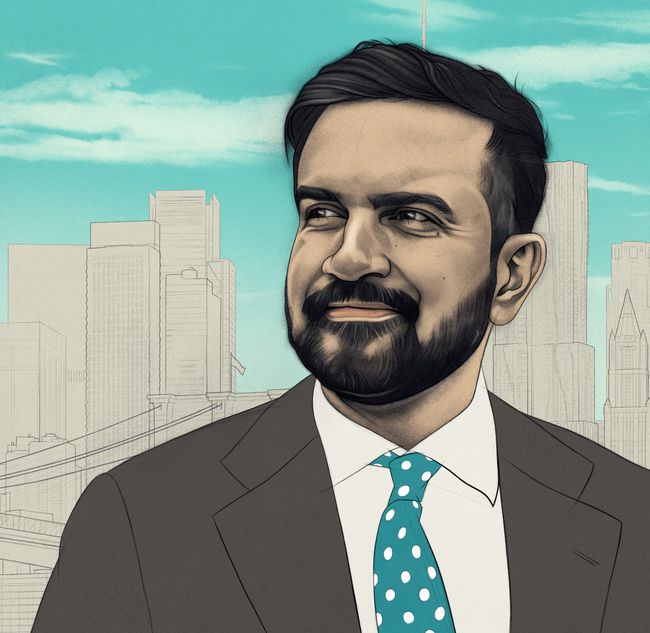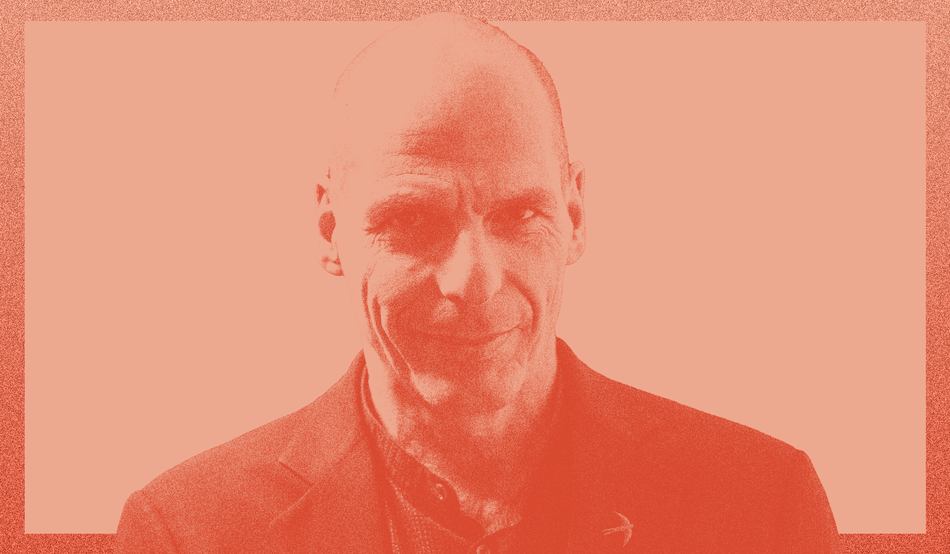After a long period of Maga-induced doom on the left and centre of US politics, the Democrats enjoyed coast-to-coast victory on last week’s election day, even in areas known as bellwether or swing districts. Candidates from across the spectrum of the party won with huge margins.
While there will doubtless be a fight inside the Democratic party about which way to lean now—centre or left—there are at least two things that all candidates who won marquee races possessed: a focus on cost of living and economic issues and the ability to campaign while connecting with voters personally. These momentous results followed two days of protests under a “No Kings” banner that encompassed collectively at least 12m people spread across the United States, in the spring and in recent weeks.
Many of those anti-Trump rallies were populated by already committed Democrats, but last week’s election victories spread beyond the base—even places like Bucks County, Pennsylvania, in suburban Philadelphia, nestled near the central New Jersey state border. (Pennsylvania is a battleground state, a must-win for a presidential contender, which was lost by Kamala Harris at the last election). Trump won Bucks in 2024— the first time a Republican had done so since George Bush Sr. Last week, however, Bucks voters elected Democrats for all offices from district attorney to sheriff. Indeed, every single race in Philadelphia and its suburbs went Democratic, including the election of the state’s first transgender mayor in Downingtown, a middle-of-the road town.
None of the races across the US were even close. Gubernatorial Democratic candidates won easily in Virginia and New Jersey. Both women, governors-elect Abilgail Spanberger and Mikie Sherill, hail from the centre of the Democratic party and have impressive credentials in the military and national intelligence. Still, the centrepiece for each was Trump’s profoundly unpopular economic policies.
People flocked to vote even when no one was running. California’s governor, Gavin Newsom—a likely future Democratic presidential candidate—promoted a ballot initiative to redraw congressional lines to secure more Democratic members of Congress. People stood in line for hours to vote for this initiative.
Of course, the marquee election was New York City’s mayoral race, where a democratic socialist, Zohran Mamdani, was victorious. (When People magazine publishes a primer on democratic socialism, you know that something has shifted in American politics). He ran the type of ideological municipal campaign not seen in the US for at least 65 years, when Frank Seidler won on the Socialist party ticket for mayor of Milwaukee, Wisconsin.
Mamdani, a member of the Democratic Socialists of America (DSA), said that he will govern without any interference or litmus tests from that organisation. (DSA, with tens of thousands of members nationally, usually works inside the Democrats, and did provide a lot of volunteers for the campaign). As someone who was a founder of DSA and left it years ago, I can attest that remaining untethered by DSA orthodoxy will be key for Mamdani’s success because some of the political positions the organisation takes today could trip up a successful mayoralty.
Historically, DSA was a democratic left force inside the Democratic party. It belonged to the Socialist International. Today’s DSA questions its Democrat engagement and hails more radical leftists like Jean-Luc Melenchon in France and Jeremy Corbyn in the UK, while denouncing more moderate socialist parties. Mamdani already found himself with a balancing act to perform on the eve of his election, when the NYC DSA chapter invited Corbyn to join a get-out-the-vote Zoom, embarrassing Mamdani as he sought to calm nervous Jewish voters.
Tensions regarding the mayor-elect, a Muslim who has supported hardcore groups like Students for Justice in Palestine, put him in conflict with most of the city’s organised Jewish community. It also unsettled a significant number of Jews from the right to the centre, and even some on the left, who see Israel as core to their own Jewish identity. He received only a third of the Jewish vote (an extremely low number for a core Democratic constituency) in the mayoral race.
The split came mostly—but not solely—along generational lines. It’s honestly difficult to imagine a Mamdani election before the campus and street protests about Israel’s actions in Gaza; his campaign built on this momentum. Given his anti-Zionist philosophy, younger Jews, without lifelong ties to Israel were more amenable to a Mamdani campaign.
And his was a campaign of aspiration. Though as Mamdani himself noted in his victory speech, one campaigns in poetry but governs in prose (a quote from his opponent former governor Andrew Cuomo’s father, the former NY governor, Mario Cuomo). The 34-year-old must prove himself to be what was once called a “sewer socialist”, a phrase pegged to those Milwaukee, Wisconsin socialist leaders in the early part of the 20th century who succeeded by delivering mundane but excellent city services not by preaching about anti-imperialism.
Mamdani’s history was enough for many to question his candidacy in the primary, including me. But he ran a campaign that can only be called brilliant and transformative for its use of social media, some 100,000 volunteers and extraordinary message discipline regarding affordability. While he didn’t convince most New York Jewish voters, he did spend time reaching out to the Jewish community and has stated that fighting antisemitism and ensuring Jewish safety are key. Still, it’s a seismic shift for New York Jews to have a mayor who is openly anti-Zionist, in a community that represents the largest Jewish population outside of Israel, and who have seen New York City as a haven in an increasingly inhospitable world. Unprecedentedly, rabbis gave sermons from the pulpit warning voters against him. This dance will take time.
One of the most hopeful signs of bridge-building is that Mamdani has reached out to Pennsylvania Governor Josh Shapiro, a popular Jewish leader who supports Israel—albeit as a noted antagonist of the Israeli prime minister and his policies (like most American Jews). Shapiro’s family was seriously hit by antisemitism when a protester tried to burn down the governor’s mansion on the first night of Passover this year, proclaiming this action in support of Palestinian rights. (Trump has yet to say a word about this occurrence.)
Meanwhile, some Jewish organisations—particularly the Anti-Defamation League (ADL), an organisation that once fought for civil rights for all people in addition to its central struggle against antisemitism but has swerved rightward under its current leadership—are attacking the mayor-elect through intimidation. ADL launched a Mamdani antisemitism tracker, something it has never done for anyone of any political stripe. There is dangerous trading in Islamophobia by Mamdani opponents, both Jewish and non-Jewish, Trump being the most prominent.
Now, this young new mayor’s real test begins. His first appointments comprise an all-female transition team of municipal professionals drawn from previous city halls, not a hard ideologue among them. Still, his campaign promises, worthy all, will be hard to implement—universal childcare, cheaper housing, free and faster buses. It’s anticipated that Trump will try to trip him up in dramatic fashion. But this means that the Democrats—even those who didn’t endorse Mamdani or gave him a bland endorsement—will have to be by his side. New York’s governor, Kathy Hochul, faces a tough re-election fight next year against a Trump acolyte, Republican Congresswoman Elise Stefanik. Stefanik is already aiming to pull Jewish votes from Hochul by attacking Mamdani on his views. This will be a test case for the Mamdani win. This Jewish voter is tired of being played by those who have other agendas—especially by the Trumpers who embrace clear antisemitic personalities in their ranks.
The biggest challenge for Mamdani will come in his former home—the New York State Assembly—where he will need support for his programmes. For instance, transportation is controlled by the state government, as are key taxation decisions. But if the Democrats want to keep winning, they need to figure out an accommodation with the mayor's base of young and enthusiastic voters.
Last week’s election day showed that Trump, with ratings at a new low of 37 per cent, according to some polls, is a tremendous liability for the party that handed him complete fealty. Not only did voters turn out in record numbers, but young men and voters feeling squeezed by the economy, who abandoned the party for Trump returned home. Last week’s results show that Democrats running on economic issues—from the left and centre—can win elections.
Until the next round of electoral races in 2026, however, the Democrats’ minority status in the US Senate and Congress is a liability, as was evident when a small group of centre senators went rogue this week, offering to compromise with the Republicans to re-open the US government from the longest shutdown in US history. The shutdown was precipitated by Republicans aiming to make Obamacare, the closest thing that Americans have to national healthcare, essentially unaffordable.
Notably, no Democratic senator up for re-election supported this move. Rightly so. The Democrats need to show mettle to up their numbers. This is the struggle for the party now: how to challenge Republican policies to retake at least one, if not both, houses of congress in 2026 as they build for the 2028 presidential race. There are predictable calls to replace New York Senator Chuck Schumer as the leader of the Democrats in the Senate, since he has been unable to hold his caucus together. Schumer was already vulnerable in his home state for not endorsing Mamdani.
The truth is that being in charge and being in opposition call for completely different skillsets. Time will now tell whether the current Democratic leadership has what it takes to move the party from opposition to governance, without being whipsawed by angry constituents. There are already moves to challenge incumbent Democrats who are not showing enough backbone, rather than simply coming together to fight Republicans. The Democrats need to find a way to do a very delicate dance—like they did this past election day—to get them to the more important victories of 2026 and 2028.












